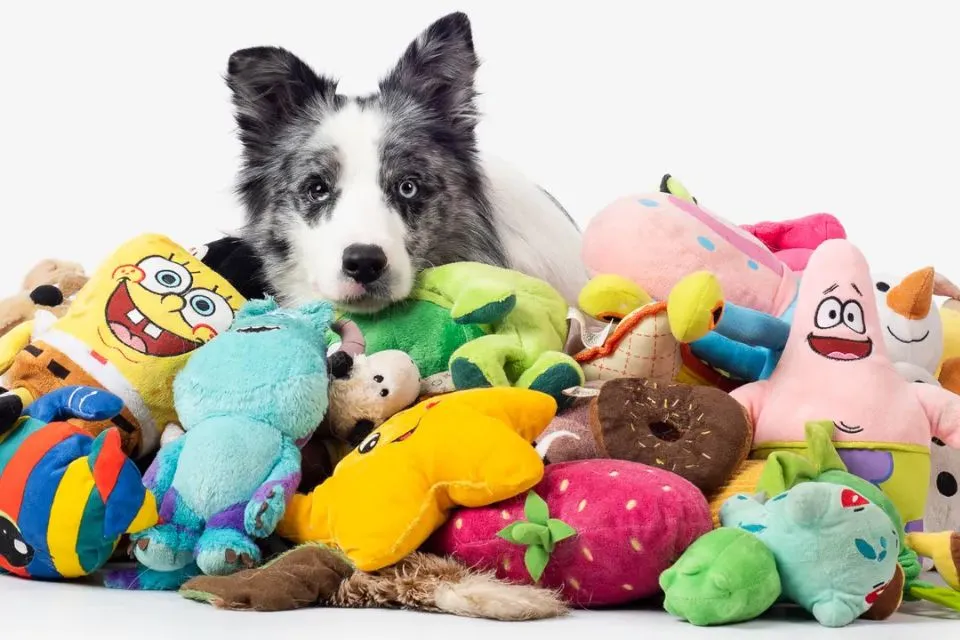Toys are more than just fun—they’re crucial tools for your dog’s development, mental stimulation, and physical exercise. However, not all toys suit every age or breed. Choosing age-appropriate toys ensures safety, prevents boredom, and provides meaningful enrichment for your canine friend.
Here’s a guide to help you select the perfect toys based on your dog’s age and developmental stage.
Puppy Toys (0–12 months)
Puppies are curious, energetic, and teething—making safe and durable toys essential.
Ideal toys for puppies:
- Chew toys (soft rubber, nylon bones) for teething relief
- Interactive puzzle toys for mental stimulation
- Plush toys without removable parts for comfort and companionship
- Small-sized balls and tug ropes for gentle play
Avoid:
- Hard or very small toys that can damage teeth or be swallowed
- Toys with loose parts or fillings that can be easily chewed off
Adolescent Dogs (1–3 years)
Dogs in this stage are highly active and strong, needing durable and engaging toys.
Recommended toys:
- Durable rubber or rope toys for chewing and playing tug-of-war
- Fetch toys (balls, frisbees, soft discs) to burn energy outdoors
- Puzzle feeders or treat dispensers to mentally challenge them
Avoid:
- Plush toys that easily tear and could become choking hazards
- Toys too small for their growing strength, as they can easily destroy them
Adult Dogs (3–7 years)
Adult dogs have established preferences and activity levels. Balance mental stimulation and physical exercise.
Ideal toys for adults:
- Sturdy chew toys for dental health and relaxation
- Interactive toys that reward problem-solving with treats
- Fetch and tug toys for active play sessions
- Soft comfort toys (if they don’t destroy them quickly)
Avoid:
- Cheap or low-quality toys that break quickly
- Toys too small or fragile, especially for larger breeds
Senior Dogs (7+ years)
Older dogs often have decreased activity levels, but still need mental and physical engagement tailored to their comfort.
Good choices for senior dogs:
- Soft plush toys for gentle comfort and companionship
- Gentle chew toys made of softer rubber or fabric
- Interactive puzzles that stimulate the mind without strenuous physical activity
- Toys designed for easier grip to accommodate aging jaws and teeth
Avoid:
- Heavy, large, or overly tough toys that may hurt sensitive teeth
- Toys that require high-intensity activity that could strain joints
General Safety Guidelines for Dog Toys
No matter your dog’s age, always keep safety first:
- Regularly inspect toys for damage or wear and discard damaged toys immediately
- Choose toys appropriately sized to avoid choking or swallowing hazards
- Supervise play sessions, especially with new or easily destructible toys
- Avoid toys with toxic materials (check labels carefully)
Consider Your Dog’s Breed and Size
Breed and size also play critical roles in selecting appropriate toys.
- Small breeds: Require smaller, lighter toys
- Large breeds: Need sturdy toys designed to withstand stronger jaws
- Active breeds (like Huskies, Labs): Benefit from interactive toys that stimulate both mind and body
- Less active breeds (like Bulldogs): Prefer gentle play and comfort toys
Tailoring your choices helps your dog enjoy safe and satisfying play.
Rotate Toys Regularly
Avoid toy boredom by rotating regularly.
- Keep some toys out and others stored away, then swap every few days
- Reintroducing toys makes old toys feel new and exciting again
Regular rotation keeps your dog engaged without buying new toys frequently.
Final Thoughts: Keep Your Dog Happy and Healthy
Choosing the right toys based on your dog’s age and development stage is essential for their overall well-being. Thoughtfully selected toys enrich your dog’s life by providing comfort, mental stimulation, and physical activity.
Remember, toys are tools to foster happiness, health, and bonding. Choose wisely, play often, and watch your dog thrive.
